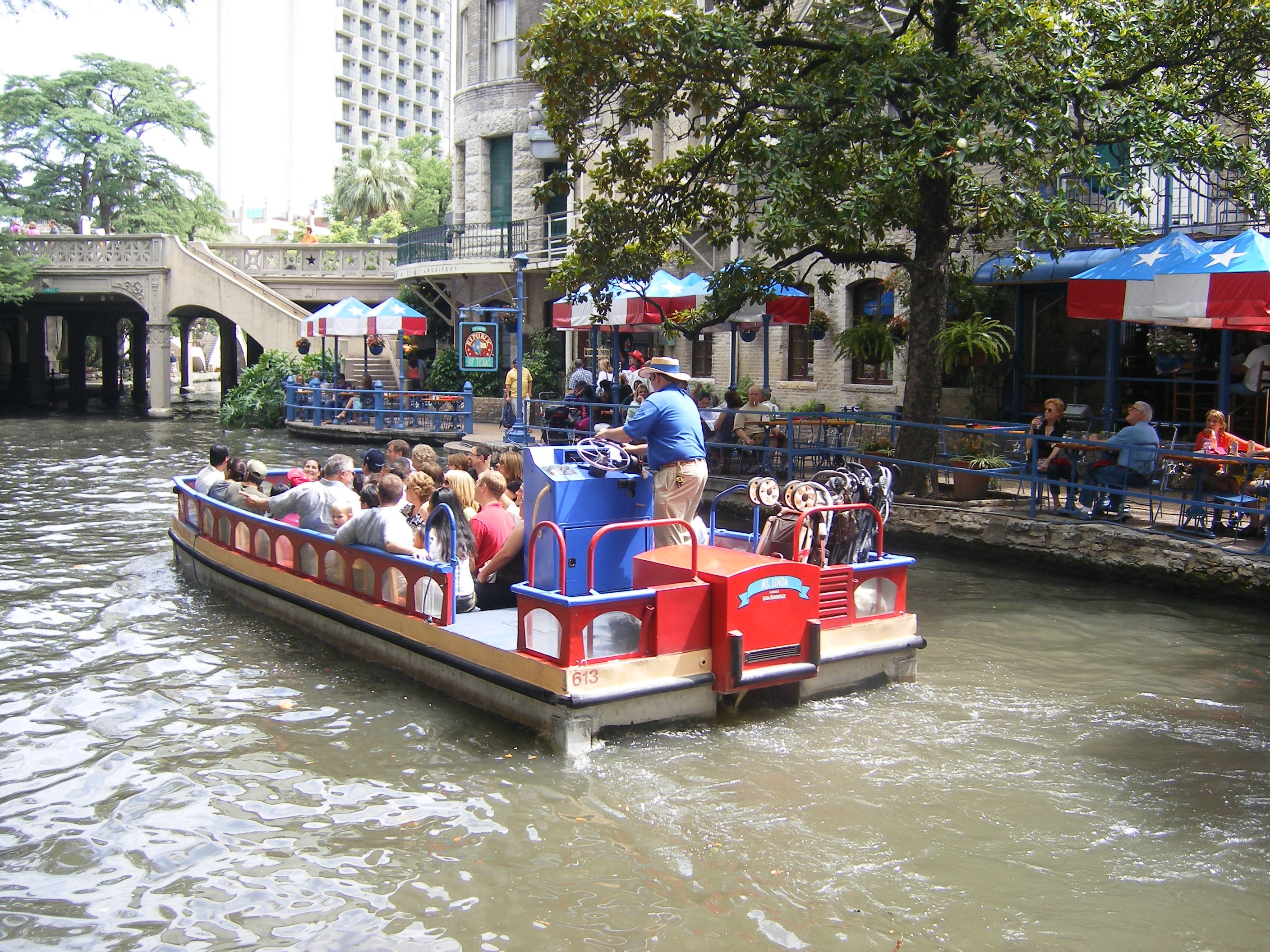San Antonio’s 300th anniversary in 2018 has inspired the city to re-imagine its river barges.
The city is partnering with The American Institute of Architects, San Antonio Chapter (AIA San Antonio) to run a competition to design new sustainable river barges to be used on the San Antonio River. The competition will open Friday, Oct. 30 to local, national and international teams.
“The San Antonio River is an iconic community feature,” said Nicole Marrone, AIA San Antonio President. “Our chapter is honored to partner with the City of San Antonio on this project to transform the River Walk experience. Local architects applaud the City’s commitment to make the river barge a more sustainable, passenger-friendly experience for tourists and locals alike.”
The first phase of the competition is an open call for teams to submit a narrative explaining their concept along with detailed renderings. A nine-person jury will select three finalists who best design an economically-feasible electric fleet.
The three finalists will move on to the second phase and receive $7,500 for design development, which includes a 3D physical model, renderings, technical specifications, cost estimate, branding and material samples. The teams will also receive a $2,500 travel stipend to present their concept to the jury in San Antonio and participate in an open house for the community to view the designs. The top three teams will each receive a cash prize. More competition details and requirement are available here.
Upon selection of the winning design, the City will release a Request for Proposals (RFP) for manufacturing of the barges, purchase the fleet and lease to an operator. The City will issue a second RFP for operation and programming of the barge fleet.
“This innovative approach will relieve the financial burden of a potential operator having to secure the upfront capital to purchase the barge fleet,” said Mayor Ivy R. Taylor. “Not only will we be able to offer an outstanding transportation option, we will encourage more competition through the RFP process.”
The competition winner will be selected in February 2016 and both RFPs for manufacturing and operation of the fleet will be issued in March 2016. Registration for the competition will be available beginning Oct. 30 on the AIA San Antonio website.
Related Stories
| May 28, 2014
KPF's dual towers in Turkey will incorporate motifs, symbols of Ottoman Empire
The two-building headquarters for Turkey’s largest and oldest financial institution, Ziraat Bank, is inspired by the country’s cultural heritage.
| May 28, 2014
B.R. Fries completes medical center focused on male health
Occupying the building’s entire second floor, the male-centric center is honeycombed with examination and consultation rooms, as well as areas for noninvasive testing.
| May 28, 2014
Moshe Safdie's twin residential towers in Singapore will be connected by 'sky pool' 38 stories in the air [slideshow]
Moshe Safdie's latest project, a pair of 38-story luxury residential towers in Singapore, will be linked by three "sky garden" bridges, including a rooftop-level bridge with a lap pool running the length between the two structures.
| May 27, 2014
Supergreen Venter lab displayed in new walk-through video
ZGF Architects' La Jolla building for genomics pioneer J. Craig Venter and his nonprofit research organization aims to be the first net-zero energy, carbon-neutral biological lab.
| May 27, 2014
America's oldest federal public housing development gets a facelift
First opened in 1940, South Boston's Old Colony housing project had become a symbol of poor housing conditions. Now the revamped neighborhood serves as a national model for sustainable, affordable multifamily design.
| May 27, 2014
Fire Rated Glass contributes to open lab environment at JSNN
Openness and transparency were high priorities in the design of the Joint School of Nanoscience & Nanoengineering within the Gateway University Research Park in Greensboro, N.C. Because the facility’s nanobioelectronics clean room houses potentially explosive materials, it needed to be able to contain flames, heat, and smoke in the event of a fire. SPONSORED CONTENT
| May 27, 2014
What are your services worth?
The price, cost, and value of design services are explored in a recent Design Intelligence article authored by Scott Simpson, a senior fellow of the Design Futures Council. Value, he explains, represents the difference between “price” and “cost.” SPONSORED CONTENT
| May 27, 2014
Contractors survey reveals improving construction market
The construction industry is on the road to recovery, according to a new survey by Metal Construction News. Most metrics improved from the previous year’s survey, including a 19.4% increase in the average annual gross contracting sales volume. SPONSORED CONTENT
| May 27, 2014
How to develop a dynamic referral system
Compelling your clients to provide you with quality referrals is one of the best ways to build a successful business. Here are ways to ‘train’ your clients to make quality referrals. SPONSORED CONTENT
Sponsored | | May 27, 2014
Grim Hall opens the door to fire safety with fire-rated ceramic glass
For the renovation of Lincoln University’s Grim Hall life sciences building into a state-of-the-art computer facility, Tevebaugh Associates worked to provide students and faculty with improved life safety protection. Updating the 1925-era facility's fire-rated doors was an important component of the project.
















